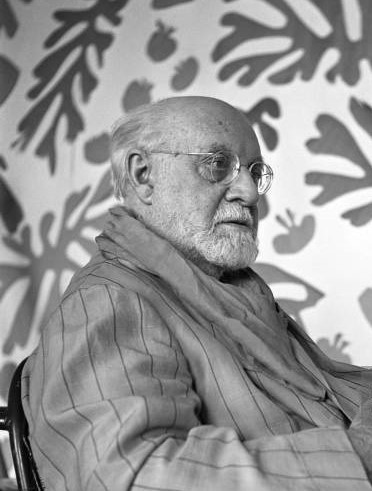Henri Matisse was born in Le Cateau-Cambrésis, in northern France, on December 31, 1869. He is one of the most prominent 20th-century artists, best known as a founding Fauvist movement member and for his modernist innovations in painting, sculpture, and his original cut-out papers découpés. Henri Matisse attended law school in Paris before studying art at the Académie Julian and the Ecole des Beaux-Arts. By 1892, he began an extended apprenticeship with the Symbolist painter Gustave Moreau, who encouraged Matisse to study the old masters and helped to develop his sense of colour. While first painting in a naturalistic style, he created increasingly experimental works after studying the art of the Impressionists, becoming familiar with Pointillism and other post-Impressionist idioms that dominated artistic discourse at the turn of the century.
Henri Matisse (1869-1954) was born in Le Cateau-Cambrésis, in northern France, on December 31, 1869. He is one of the most prominent 20th-century artists, best known as a founding Fauvist movement member and for his modernist innovations in painting, sculpture, and his original cut-out papers découpés. Henri Matisse (1869-1954) attended law school in Paris before studying art at the Académie Julian and the Ecole des Beaux-Arts. By 1892, he began an extended apprenticeship with the Symbolist painter Gustave Moreau, who encouraged Matisse to study the old masters and helped to develop his sense of colour. While first painting in a naturalistic style, he created increasingly experimental works after studying the art of the Impressionists, becoming familiar with Pointillism and other post-Impressionist idioms that dominated artistic discourse at the turn of the century.
Attuned to African and “primitive” art, Matisse began painting using bold colours in broad, flat applications of paint with bold outlines, which developed into his mature Fauvist style in the mid-1900s. He exhibited his work at the Salon des Indépendants, and the provocative 1913 Armory Show in New York, and his work was sought after early on by collectors, including the famed Gertrude Stein. Between 1914 and 1918, his work became increasingly angular and abstracted, at times displaying abrupt changes from naturalism to abstraction in a single work, executed using muted colours; this change in style was believed to be reflective of his reaction to WWI. From the 1920s on, Matisse divided his time between Paris and southern France, painting works with loose, fluid forms, vibrant patterns, and bright colours, working in set design and sculpture in addition to painting. After two operations in the 1940s, he became increasingly active as a printmaker and published a variety of livres d’artiste. Matisse reinvigorated his study of colour in his last years through his cut-outs made from brightly painted paper in collages he called papiers découpés, a method used in his Jazz series, as well as in designs for several chapels. Held in high critical regard during his lifetime, a retrospective of Matisse’s work opened in 1951 at the Museum of Modern Art in New York, travelling all over the United States. In 1952, the Musée Matisse opened in Matisse’s French hometown of Le Cateau-Cambrésis, two years before the artist’s death in 1954.
